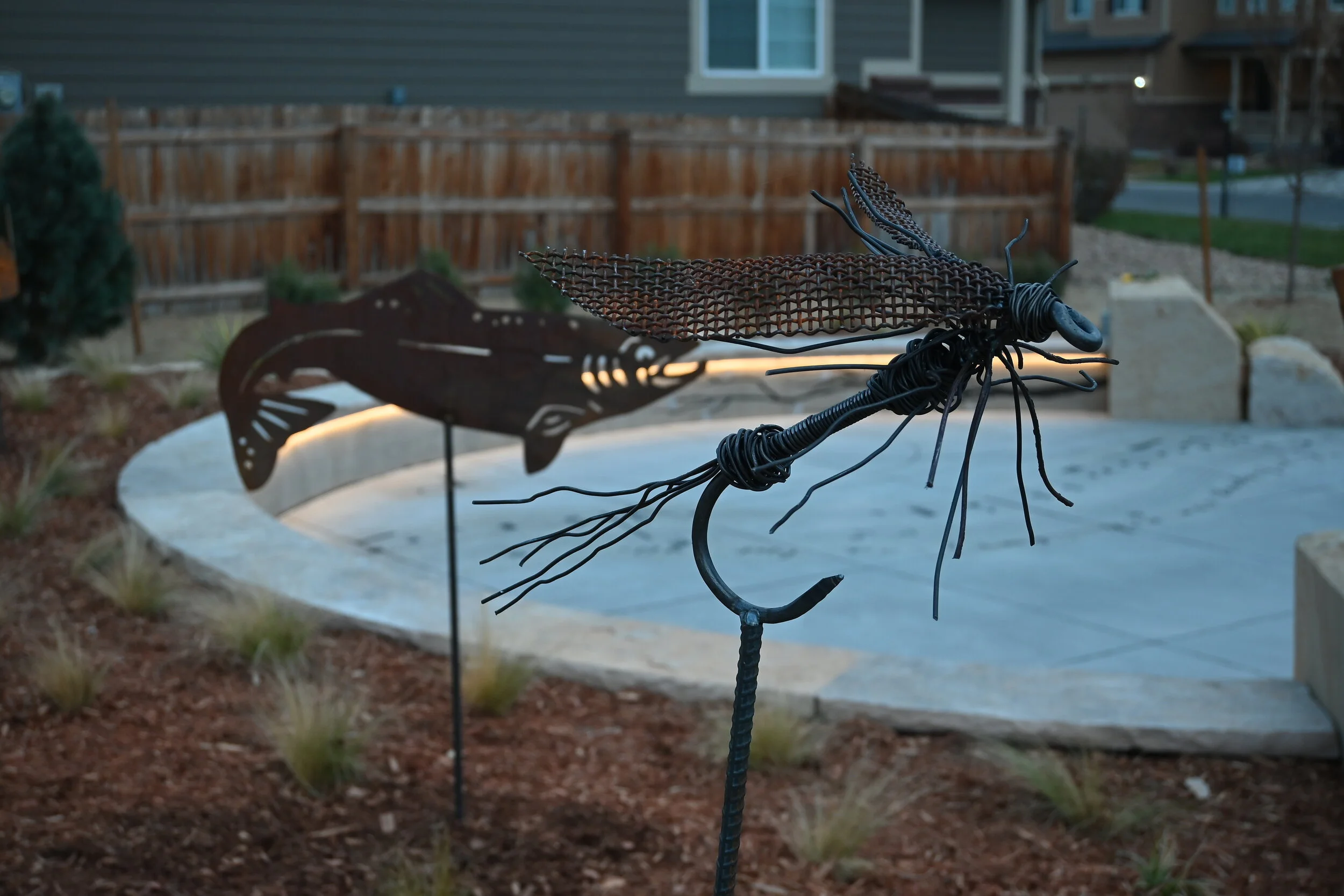Design Concepts announces the transition of founding Principals, Axel Bishop and Robby Layton, Ph.D., to their new roles as Principals Emeriti.
The Evolution of Outdoor Education for Schoolchildren
Recently published in Educational Facility Planner, the professional journal of the Association for Learning Environments, “The Evolution of Outdoor Education for Schoolchildren”, by Carol Henry, reflects on the evolution of outdoor education in schoolyards.
While thoroughly embraced by private schools like the Montessori and Waldorf models, the notion of using the schoolyard for outdoor education has been sluggish in adopting by public schools. Although the idea may be accepted, for many school districts the curriculum, maintenance, and funding necessary to support it have been slow to fully develop.
While sluggish in some areas of public education, especially with middle- and high school-level programs, in others outdoor learning environments are making great strides impacting children across the country. In Colorado, Denver Public Schools has provided support and funding to implement its innovative Learning Landscape Schoolyards in each of its 98 elementary schools. Other programs around the nation include the Boston Schoolyard Initiative as well as New York City's and Trust for Public Land’s Schoolyard to Playground Initiative. Like these, many have made breakthroughs in elementary school-level outdoor learning opportunities and reconnecting schools with their communities.
Increasingly, entities such as the lottery-funded Great Outdoors Colorado (GOCO) and The Colorado Health Foundation are stepping in to provide sources of funding for outdoor learning initiatives. Between 2013 and 2016, GOCO offered School Play Yard Initiative Grant that “creates safer, more active play areas and environments for outdoor learning at schools.”
Championing Outdoor Learning Since the 1980s
Design Concepts has long been a champion of expanding the boundaries of learning opportunities in the schoolyard.
The 1980s
In the 1980s, we saved one of the last sections of undisturbed native prairie for a Jefferson County, Colorado, elementary school outdoor learning area and created native learning areas to transition between the mountainous forest and a new elementary school in Nederland, Colorado.
The 1990s
In the ‘90s, we turned a potentially sterile detention area for a large middle school into a biodiverse outdoor learning lab with thriving wetland plants and plentiful wildlife. In 1990 in Boulder, we designed the transformation of an elementary school’s concrete drainage swale into a thriving wetland, observation deck, boardwalk, and outdoor classroom. This wetland area survived the massive Colorado floods in 2013, while the surrounding areas were devastated. The floods were described as 1,000-year rain and a 100-year flood, occurring over 8 stormy days, causing devastation from the eastern side of the continental divide to the Colorado/Kansas border.
Today
Since then, we have worked on over two-dozen Learning Landscapes, complete with outdoor classrooms, gardens, artwork, colorful gateways and shade shelters, tracks, and environmental learning areas for Denver Public Schools. Student learning pieces include such diverse elements as weather stations with a remote readout for students to track the weather, themed elements which include facts such as insect and animal lifecycles etched in boulders and pavement, poems which describe the places and things one would see travelling along a nearby stream and floating all the way out to the sea, or the fanciful graphics with shapes and colors that students can study and count. We have also helped other school districts to expand their abilities to extend learning into the schoolyard.
Two Innovative Outdoor Learning Environments
Design Concepts is fortunate to be working on two of the most exciting outdoor learning environments for high schools in Colorado and Wyoming, fully integrating the schoolyard into the schools’ curriculum. See full story on these projects at:
· Former CAPS/Roosevelt High School, now known as Pathways Innovation Center in Casper, Wyoming
· Warren Tech Option School Career and Technical Center in Lakewood, Colorado
We are currently working on two exciting high school projects (see full story on these projects here), to fully integrate the schoolyard into the schools’ curriculum at:
· Former CAPS/Roosevelt High School, now known as Pathways Innovation Center in Casper, Wyoming
· Warren Tech Option School Career and Technical Center in Lakewood, Colorado
See the Association for Learning Environment journal for the full article
Frances Jacobs Incorporates Energy Theme Into School Playground
“I can’t change the direction of the wind, but I can adjust my sails to always reach my destination.” – Jimmy Dean. This quote is one of many energy-themed educational elements found at Frances Jacobs School in Denver, where color, textures and patterns vividly intertwine the theme throughout the site. The October 2015 issue of Landscape Record magazine focuses on projects around the world and how vibrant design is at the forefront. Design Concepts is proud to have Frances Jacobs School in Denver included as one of the highlighted projects, found on page 108.
Schoolyards offer playful opportunities to incorporate vivid colors with a variety of whimsical textures and patterns into fun and educational elements. Energy-themed elements at Frances Jacobs incorporate an abundance of color as that was the strong desire of the principal, staff and other stakeholders who participated early on in the design phase. Talk about creativity! The energy theme produced an abundance of ideas for how to incorporate this theme into the site. For example, the eye-catching main entrance to the school is a “Wind Walk” of richly colored patterned concrete. The gateway signage portrays an abstract curving wind motion, and the outdoor amphitheater has etched energy-related quotes into the steps and sandblasted imagery such as corn, geothermal, petroleum, sun, coal and hydro power. Visit the playground and you’ll find a weathervane sculpture that represents kinetic energy as well as teaches navigational direction; windmill hopscotch, representing rotational energy converted from the wind created from rotating sails of the windmill, accessible for kids in wheelchairs; tetherball with “giant propellers” (etched colorful blowing triangles in the asphalt depicting “scattered” objects); and foursquare courts with the varieties of wind painted into the quadrants: moderate wind and hurricane wind for example. This project was an enjoyable one not to mention a learning experience for Design Concepts, the staff and students!










